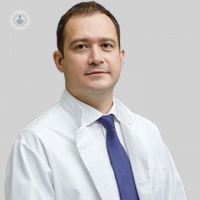Carboxytherapy and how it can treat acne
Escrito por:Acne is a skin condition characterised by flare-ups of pimples and blemishes that can be quite painful and unsightly. In this article, a consultant aestheticist and dermatologist explains an up-and-coming treatment technique for acne and related scarring: carboxytherapy.

What is acne?
Acne is prevalent and many people worldwide may struggle with acne on their face, back, and torso. It is most common for adolescents and young adults, but sensitivity in the skin that triggers acne can occur at any age.
It is caused by blockage to the skin’s pores, which are small holes in the skin that respire and release oil and sweat produced by the glands. Blockages can be caused by a build-up of oil (sebum), dirt, dead skin cells, or bacteria. With these blockages, the skin reacts by triggering inflammation around the area, creating red, swollen, and painful pimples.
Acne can be exacerbated by tight clothing, greasy grooming products, air pollution and humidity, and stress.
Adolescents and young adults are more likely to have acne due to an influx of androgen hormones, specifically testosterone, that starts during puberty.
There are several kinds of acne, such as:
- Fungal acne, which is caused by a buildup of yeast on the skin and in the hair follicles.
- Cystic acne, which are deep-rooted, pimples of pus which are the most likely to scar when burst or during healing.
- Hormonal acne, which affects those whose bodies produce too much sebum.
- Nodule acne, which is another type of acne that is prone to scarring, where pimples on the surface have nodular lumps beneath.
How is acne treated with carboxytherapy?
Acne pimples, nodules, and cysts may not last forever, and there is a wide variety of treatments and medications to address acne, but long-lasting scarring, in the form of keloids or pits in the skin, can also be burdensome for patients.
One treatment for both acne and acne-related scarring is carboxytherapy, a non-surgical technique that stimulates the skin’s oxygen-rich blood flow to targeted areas to initiate the healing process.
Carboxytherapy is a cosmetic procedure to reduce the appearance of scars and other skin blemishes, and involves having carbon dioxide injected underneath the skin. The sudden introduction of carbon dioxide confuses the body, leading it to believe that the area around the injection site is in dire need of oxygen, and it responds by directing an influx of blood to the area through widened blood vessels. This blood will be oxygen-rich so to best facilitate cell restoration and tissue repair. Throughout the course of therapy, this will lead to fresher-looking skin with fewer fine lines, stretch marks, and of course, acne and scars.
The benefits of carboxytherapy include:
- Increased collagen and elastin production
- Skin tissue and cell metabolism is improved
- Local blood flow improves
- The skin’s PH is neutralised
- Reduces inflammation
Carboxytherapy is considered to be equally effective as microneedling, however with less chance of infection as there are fewer punctures in the skin as compared to microneedling.
Carboxytherapy courses can range between three to 20 sessions, depending on the complexity of the acne and how much skin needs to be treated. After a session, there may be swelling and redness, due to the increased blood flow, and there may be irritation in the form of rashes or extra bumps and pimples – however, this is normal and should clear after three days, as long as the skin is not scratched, squeezed, or picked at in this time.
If you’re struggling with acne, you can consult with a dermatology specialist on Top Doctors.


